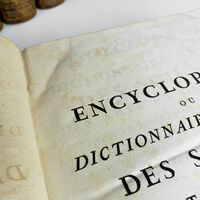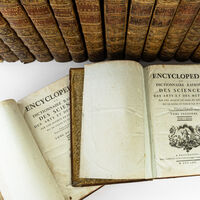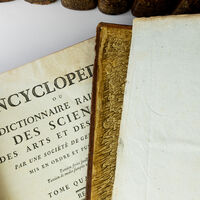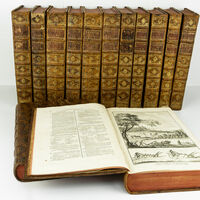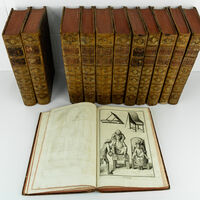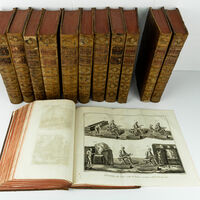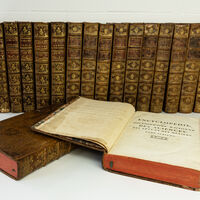Diderot-d'Alembert Encyclopedia
The definitive compendium of human knowledge in the Enlightenment
The Encyclopedia, also known as the Encyclopédie, was a monumental work published in France during the 18th century. It was edited by Denis Diderot and Jean le Rond d'Alembert and became one of the most important and influential works of the Enlightenment.
The Encyclopedia was an ambitious project that sought to collect and organize all the available human knowledge at that time. The work consists of 28 volumes, which include articles on diverse topics such as philosophy, science, art, politics, economy, religion, and many others.
The 28 volumes include 17 volumes of articles (published between 1751 and 1765), 11 volumes of illustrations (published between 1762 and 1772).
Although there are some editions with variations in the number of volumes, these numbers are the most commonly accepted.
If we include the additional five volumes of supplements that were published between 1776 and 1777, and two volumes of indexes published in 1780, the number of volumes increases to 35.
The editors of the Encyclopedia faced many difficulties throughout its elaboration. The work was considered subversive by the French authorities, who attempted to censor and prohibit it on several occasions. However, the Encyclopedia managed to survive and became a symbol of freedom of thought and the dissemination of knowledge.
The Encyclopedia is a fundamental work for understanding the Enlightenment and its intellectual legacy. In addition to collecting and organizing human knowledge, the work also included critical reflections on the society and politics of the time. The Encyclopedia contributed to spreading the ideas of the Enlightenment throughout Europe and laid the foundations for the French Revolution and the fight for equality and freedom.
In summary, Diderot and d'Alembert's Encyclopedia is a monumental work that represents one of the greatest intellectual achievements of the Enlightenment. It is a testament to the fight for freedom of thought and the importance of the dissemination of knowledge for human progress.

The Encyclopedia, also known as the Encyclopédie, was a monumental work published in France during the 18th century. It was edited by Denis Diderot and Jean le Rond d'Alembert and became one of the most important and influential works of the Enlightenment.
The Encyclopedia was an ambitious project that sought to collect and organize all the available human knowledge at that time. The work consists of 28 volumes, which include articles on diverse topics such as philosophy, science, art, politics, economy, religion, and many others.
The 28 volumes include 17 volumes of articles (published between 1751 and 1765), 11 volumes of illustrations (published between 1762 and 1772).
Although there are some editions with variations in the number of volumes, these numbers are the most commonly accepted.
If we include the additional five volumes of supplements that were published between 1776 and 1777, and two volumes of indexes published in 1780, the number of volumes increases to 35.
The editors of the Encyclopedia faced many difficulties throughout its elaboration. The work was considered subversive by the French authorities, who attempted to censor and prohibit it on several occasions. However, the Encyclopedia managed to survive and became a symbol of freedom of thought and the dissemination of knowledge.
The Encyclopedia is a fundamental work for understanding the Enlightenment and its intellectual legacy. In addition to collecting and organizing human knowledge, the work also included critical reflections on the society and politics of the time. The Encyclopedia contributed to spreading the ideas of the Enlightenment throughout Europe and laid the foundations for the French Revolution and the fight for equality and freedom.
In summary, Diderot and d'Alembert's Encyclopedia is a monumental work that represents one of the greatest intellectual achievements of the Enlightenment. It is a testament to the fight for freedom of thought and the importance of the dissemination of knowledge for human progress.

